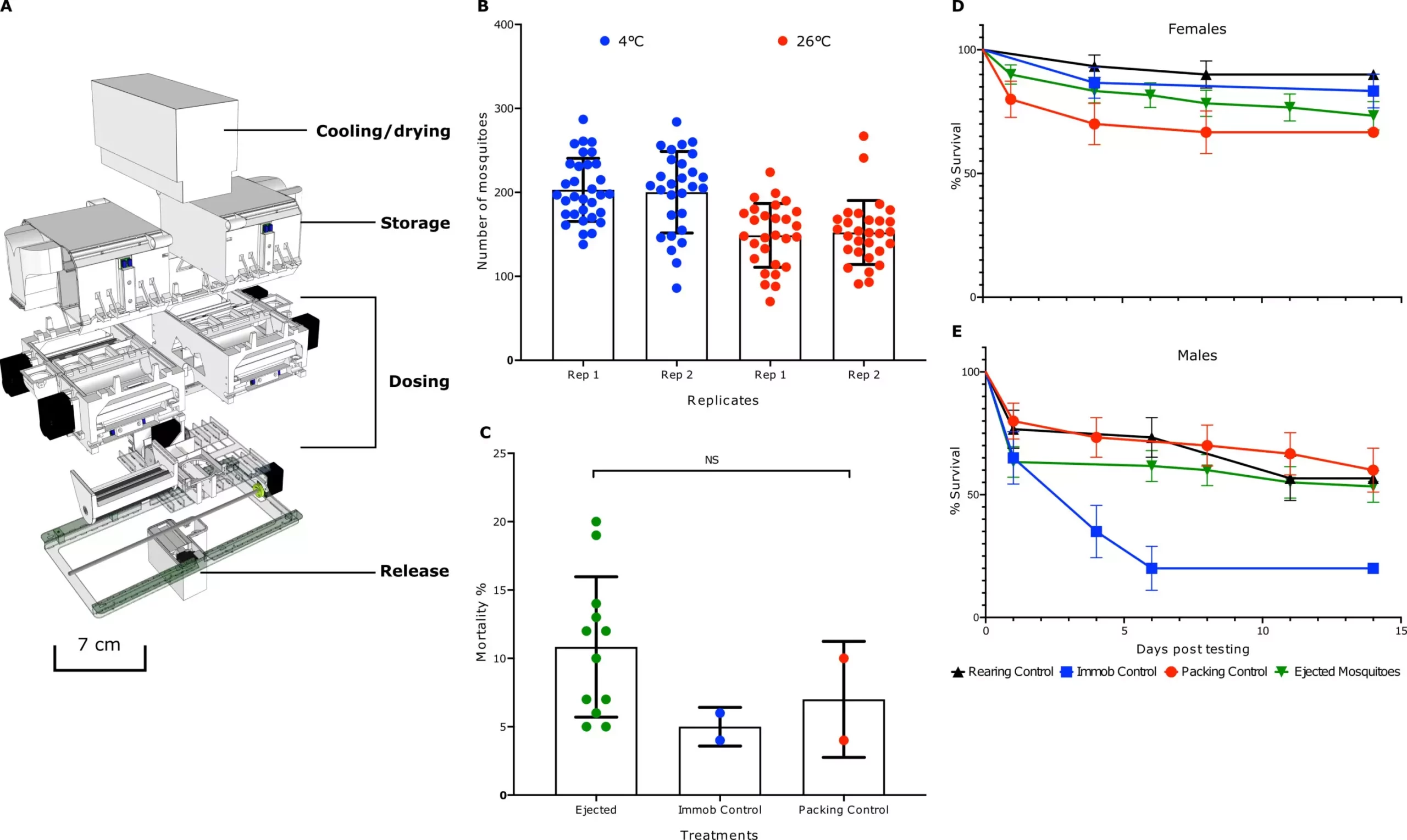In the relentless battle against vector-borne diseases, a groundbreaking advancement is emerging from the collaboration of researchers at the World Mosquito Program and WeRobotics. Their innovative approach harnesses the capabilities of drone technology to unleash large populations of genetically manipulated mosquitoes—ones that carry a debilitating bacterium—across infected regions. This novel technique represents a significant leap forward, transforming a traditionally labor-intensive and risky operation into a streamlined, automated process that promises efficiency and effectiveness in reducing disease-carrying mosquito populations.
Historically, controlling mosquito populations has relied upon the hand-release of infected specimens after breeding and infecting them. This method not only consumed significant manpower and resources but also ventured into dangerous territories, risking exposure to pathogens carried by adult mosquitoes. The introduction of drone technology offers a multifaceted solution that addresses these shortcomings and introduces an unparalleled level of precision in pest control operations.
The Science Behind the Strategy
One of the pivotal elements of this innovative technique is the utilization of a specially designed container, a small white box capable of carrying up to 160,000 mosquitoes. This box is engineered to be lightweight and compact enough to be easily transported by drones. Inside, the mosquitoes are compartmentalized and will remain sedated until their strategic release. This meticulous design ensures that the drones can disperse the infected populations evenly across a sizable area, overcoming the limitations inherent in manual distributions.
The research team’s findings illuminate not just the feasibility of such a system, but also its effectiveness. Trials conducted in Fiji have demonstrated a marked improvement in distribution uniformity and mosquito population declines compared to the manual release methods that have dominated past approaches. With the ability to cover extensive terrains rapidly, drones enable researchers to tackle large-scale infestations and assess the ecological impacts almost in real-time.
Challenges and Opportunities in Automated Aerial Releases
Despite the promising results, several challenges remain to be addressed. For instance, compliance with local wildlife regulations and gaining public acceptance are essential in promoting aerial releases of genetically engineered organisms. Moreover, ongoing research is critical to ensure that the targeted interventions do not have unintended ecological consequences. The nuanced interaction between genetically altered insects and existing ecosystems requires comprehensive monitoring and evaluation.
However, these challenges also present unique opportunities for researchers and public health officials alike. The ability to automate mosquito releases could revolutionize pest control practices not only for combating dengue fever but also for other vector-borne diseases, including malaria and West Nile Virus. As automated and drone-assisted technologies continue to evolve, they can facilitate a broader range of ecological interventions, enabling us to respond more effectively to emerging diseases.
Future Implications of Drone-Assisted Interventions
The implications of such innovative technology reach far beyond merely combating mosquitoes. By streamlining and optimizing public health responses, drone technology can serve as a model for future efforts in epidemiological management. The infrastructure developed for mosquito releases can potentially extend to other vectors, making this a versatile tool in the global fight against infectious diseases.
As researchers like Jacob Crawford emphasize in their discussions surrounding automation in disease control, efficiency is not the sole benefit of these aerial mechanisms. The reduction of human interaction with infected populations, combined with the precision of drone-led distributions, could markedly decrease the reliance on hazardous chemical pesticides that have historically posed risks to surrounding environments and non-target species.
Drone technology offers a transformative approach to mosquito population management that could redefine the future of disease control strategies. As research continues to address existing challenges, the promise of precision and efficiency stands at the forefront of pest control innovations, heralding a new era in our efforts to combat vector-borne diseases.


Leave a Reply